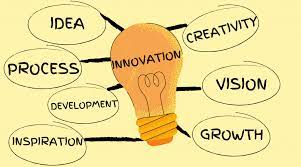The Art of Storytelling
Storytelling is a timeless tradition that has been passed down through generations, captivating audiences and igniting imaginations. It is a powerful tool that transcends language and culture, connecting people on a fundamental level.
At its core, storytelling is more than just relaying events or facts – it is about creating an emotional connection with the audience. Through narratives, we can evoke empathy, inspire action, and convey complex ideas in a compelling and accessible manner.
One of the key elements of effective storytelling is authenticity. Authentic stories resonate with audiences because they are genuine and relatable. Whether it’s a personal anecdote or a brand narrative, authenticity builds trust and fosters deeper connections.
Another important aspect of storytelling is structure. A well-crafted story has a clear beginning, middle, and end – drawing the audience in with an engaging introduction, building tension through conflict or challenges, and providing resolution or insight by the conclusion.
Moreover, storytelling allows us to preserve memories, share knowledge, and shape our identities. From ancient myths to modern marketing campaigns, stories have the power to educate, entertain, and influence society.
In today’s digital age, storytelling has evolved to encompass various forms – from written narratives to visual storytelling through images and videos. With the rise of social media and digital platforms, individuals and brands have more opportunities than ever to craft their stories and reach wider audiences.
In conclusion, storytelling is an art form that transcends time and technology. By harnessing the power of narrative techniques and embracing authenticity, we can create meaningful connections and leave a lasting impact on those who listen.
Exploring Storytelling: Key Concepts, Skills, and Techniques
- What are the 4 P’s of storytelling?
- What does storytelling mean?
- What is storytelling skill?
- What are the four types of storytelling?
- What do you mean by storytelling?
- What is the idea of storytelling?
- What are the 6 rules of storytelling?
- What are the 5 types of storytelling?
What are the 4 P’s of storytelling?
The 4 P’s of storytelling refer to the essential elements that contribute to crafting a compelling narrative: Plot, Purpose, People, and Place. The plot forms the backbone of the story, outlining the sequence of events and driving the narrative forward. Purpose delves into the underlying message or intention behind the story, guiding its direction and impact on the audience. People focus on character development and relationships within the story, adding depth and emotional resonance. Lastly, place sets the scene and context in which the story unfolds, creating a vivid backdrop for the events to unfold. By incorporating these 4 P’s effectively, storytellers can create engaging and memorable tales that resonate with their audience.
What does storytelling mean?
Storytelling is the art of narrating a sequence of events or experiences in a compelling and engaging manner. It goes beyond mere recounting of facts; storytelling involves weaving emotions, characters, and themes into a cohesive narrative that captivates the audience. At its core, storytelling is about creating connections, evoking empathy, and conveying messages that resonate with the listeners. Whether through spoken words, written prose, or visual mediums, storytelling serves as a powerful tool for sharing knowledge, preserving culture, and inspiring imagination.
What is storytelling skill?
The storytelling skill encompasses the ability to craft narratives that engage, inspire, and resonate with audiences. It involves not only the art of structuring a compelling story but also the emotional intelligence to connect with listeners on a deeper level. A skilled storyteller can weave together characters, settings, and themes to evoke empathy, provoke thought, and leave a lasting impression. Storytelling skill goes beyond mere communication; it is about conveying messages in a way that captivates hearts and minds, making the narrative memorable and impactful.
What are the four types of storytelling?
In the realm of storytelling, there are four main types that serve as distinct approaches to conveying narratives: oral storytelling, written storytelling, visual storytelling, and digital storytelling. Each type offers unique opportunities for creativity and engagement, catering to diverse preferences and mediums of expression. Oral storytelling relies on spoken words and gestures to captivate listeners, while written storytelling utilises the written word to craft intricate plots and characters. Visual storytelling leverages images, illustrations, and graphics to convey narratives visually, appealing to the audience’s sense of sight. Lastly, digital storytelling integrates multimedia elements such as videos, animations, and interactive features to immerse viewers in dynamic and interactive stories across digital platforms. These four types of storytelling showcase the versatility and richness of the art form in captivating audiences through various channels.
What do you mean by storytelling?
Storytelling is the art of conveying narratives or tales through spoken words, written text, images, or other forms of expression. It goes beyond mere recounting of events; storytelling involves crafting a compelling narrative that engages the audience emotionally and intellectually. Through storytelling, individuals and brands can communicate their experiences, values, and messages in a way that resonates with others, fostering connections and creating lasting impressions.
What is the idea of storytelling?
The concept of storytelling revolves around the art of narrating events, experiences, or emotions in a structured and engaging manner to convey a message or evoke a response from the audience. At its core, storytelling serves as a powerful medium for sharing knowledge, fostering connections, and sparking imagination. By weaving together elements such as characters, plot development, and themes, storytellers can transport listeners into different worlds and perspectives, allowing them to empathise, learn, and reflect. Ultimately, the idea of storytelling lies in its ability to captivate hearts and minds through the magic of words and narratives.
What are the 6 rules of storytelling?
When exploring the question of the six rules of storytelling, it becomes evident that storytelling is a nuanced art form with guiding principles that shape compelling narratives. These rules often include elements such as character development, plot structure, conflict resolution, setting establishment, theme exploration, and emotional engagement. By adhering to these fundamental rules, storytellers can craft immersive and impactful stories that resonate with audiences on a profound level. Each rule plays a crucial role in shaping the narrative landscape and enhancing the overall storytelling experience for both creators and listeners alike.
What are the 5 types of storytelling?
In the realm of storytelling, there exist five distinct types that serve as pillars of narrative expression. These include oral storytelling, where tales are shared verbally and passed down through generations; written storytelling, which encompasses literature in various forms such as novels, short stories, and poetry; visual storytelling, utilising images and graphics to convey narratives in mediums like comics, illustrations, and films; digital storytelling, leveraging technology to create interactive and multimedia-rich narratives; and finally, performance storytelling, where stories are brought to life through theatrical performances or spoken word presentations. Each type offers a unique avenue for storytellers to engage audiences and evoke emotions through diverse means of expression.



